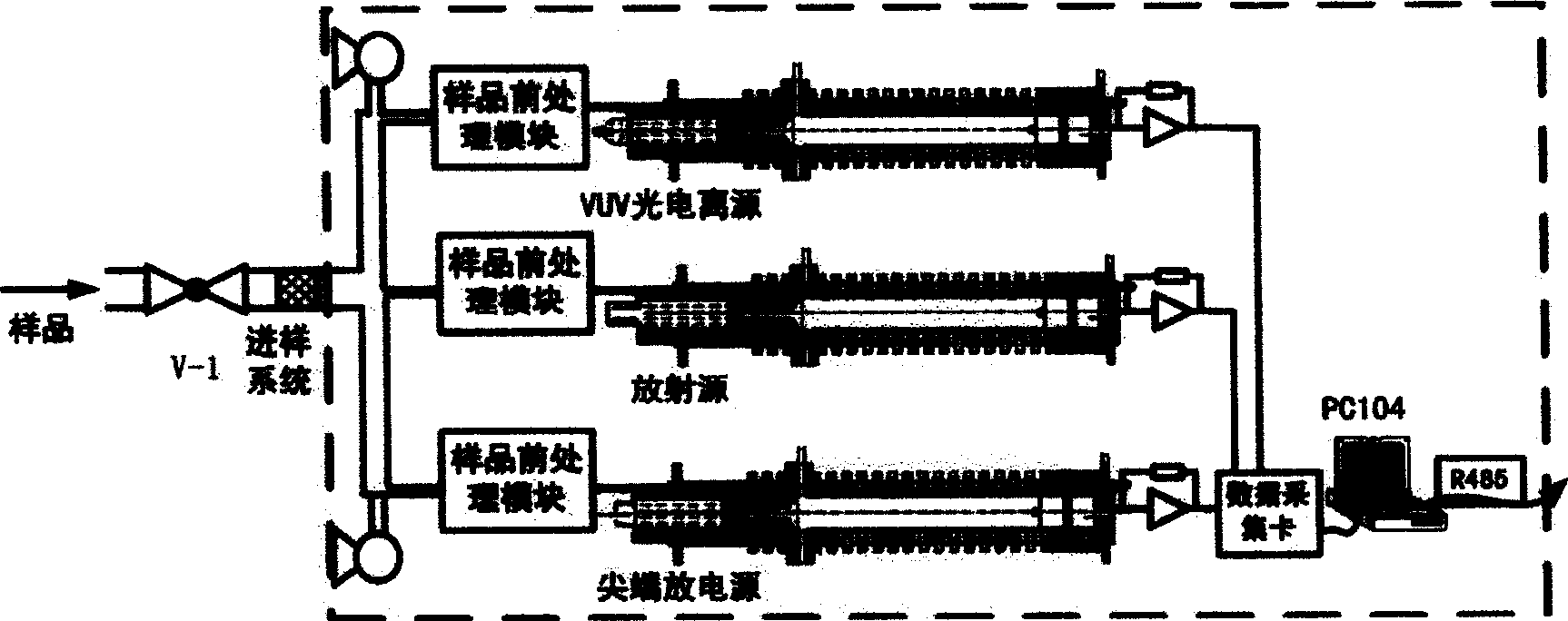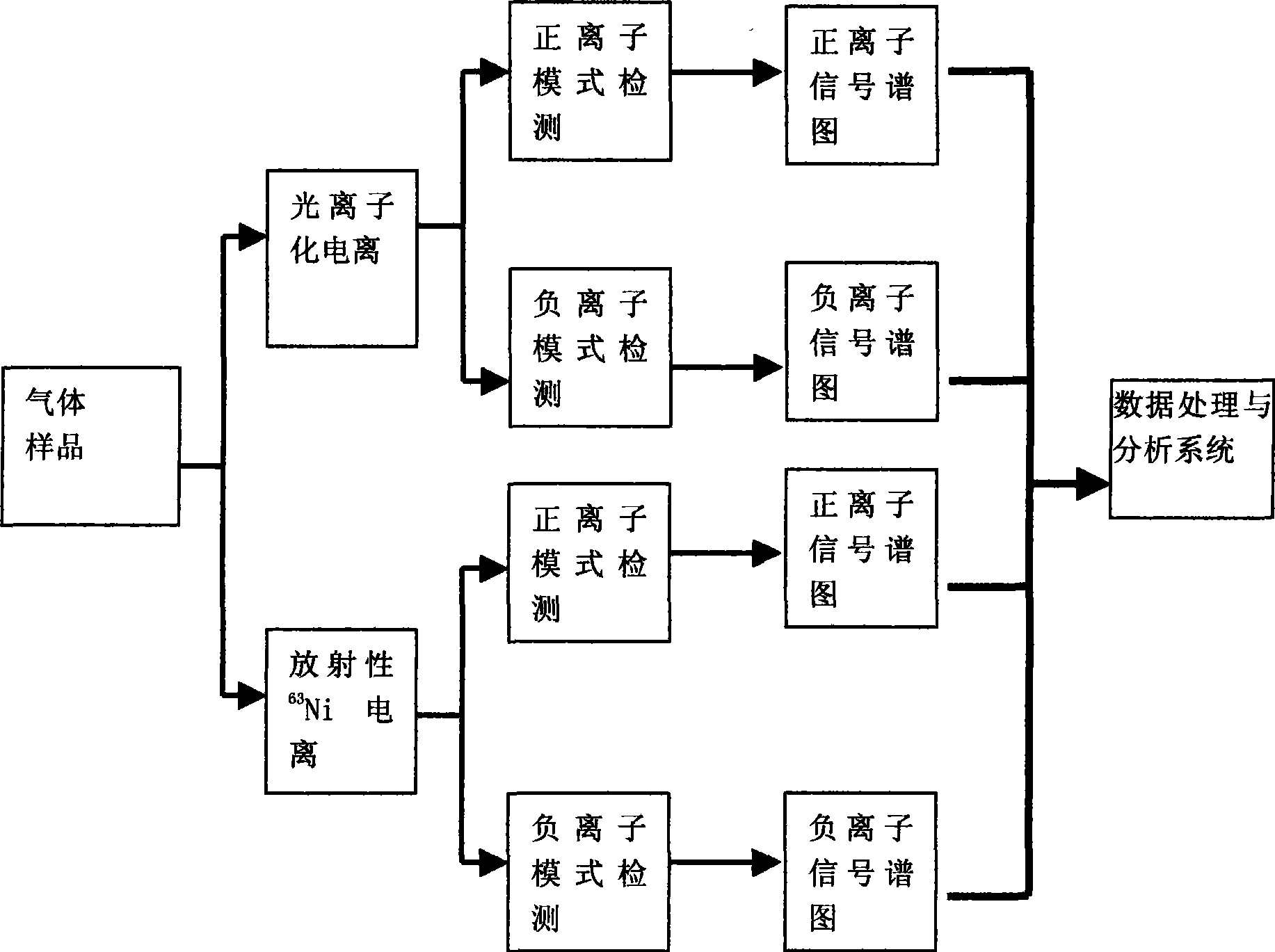Method for recognizing and analyzing sample and ion transfer spectrometer
The technology of ion mobility spectrometer and ion transfer tube is applied in the field of ionization mode and detection mode of ion mobility spectrometer, which can solve problems such as difference between positive and negative ion mobility spectrum, and achieve the effect of improving analysis and identification ability.
- Summary
- Abstract
- Description
- Claims
- Application Information
AI Technical Summary
Problems solved by technology
Method used
Image
Examples
Embodiment 1
[0029] Figure 4 Given is that methanol is radioactive 63 The combination of Ni ionization source and VUV photoionization source, the mobility spectrum in positive ion detection mode. It has no response in VUV photoionization mode, positive ion detection mode, but in 63 There is a response in Ni ionization mode and positive ion detection mode, and a characteristic peak appears at the position of migration time 27.83ms. In this way, substances such as methanol are radioactive 63 Whether it can respond under Ni ionization mode and VUV photoionization mode, as well as the difference in response intensity and position, provide more information for ion mobility spectrometry to identify samples, and at the same time 63 The Ni ionization method makes up for the shortcoming that methanol cannot be ionized in the VUV photoionization mode, and broadens the types of compounds measured by ion mobility spectrometry.
Embodiment 2
[0031] Figure 5 Given are dibromomethane and carbon tetrachloride in the radioactive 63 Ni ionization, mobility spectrum in negative ion detection mode, Figure 6 Shown are the migration spectra of dibromomethane and carbon tetrachloride under VUV photoionization and positive ion detection mode. It can be seen from the figure that the migration times of methylene bromide and carbon tetrachloride in the negative ion detection mode are very close (21.31ms and 21.28ms), and it is difficult to distinguish them, but their responses under the VUV photoionization and positive ion detection modes are very similar. Not the same, dibromomethane has a strong response at the position with a migration time of 21.75ms, while CC14 has basically no response. Therefore, the difference in the response of substances in positive and negative ion detection modes can provide more information for ion mobility spectrometers to identify samples, and the application of positive and negative ion mode...
Embodiment 3
[0033] Figure 7 Shown is the migration spectrum of butanone under VUV photoionization and discharge ionization, positive ion detection mode. It can be seen from the figure that butanone has two characteristic peaks in the discharge ionization mode, and the response time is 23.58ms and 24.36ms respectively, and there is a characteristic peak in the VUV photoionization mode, and the response time is 22.43ms. Therefore, the difference in response time and response intensity of substances under the two ionization modes of VUV photoionization and discharge ionization can provide more information for ion mobility spectrometry to identify samples.
PUM
 Login to View More
Login to View More Abstract
Description
Claims
Application Information
 Login to View More
Login to View More - R&D
- Intellectual Property
- Life Sciences
- Materials
- Tech Scout
- Unparalleled Data Quality
- Higher Quality Content
- 60% Fewer Hallucinations
Browse by: Latest US Patents, China's latest patents, Technical Efficacy Thesaurus, Application Domain, Technology Topic, Popular Technical Reports.
© 2025 PatSnap. All rights reserved.Legal|Privacy policy|Modern Slavery Act Transparency Statement|Sitemap|About US| Contact US: help@patsnap.com



